Zero-distance contact of coffee
Finally, I got a chance to witness the coffee production process. This was after visiting MONTENEGRO National Coffee Park in Quindio, Colombia, and a garden coffee estate in MANIZALES, Caldas.
Coffee comes from Ethiopia. In Colombia it was brought from the French Antilles by a priest via Venezuela in 1808. Colombia is currently the world's fourth largest coffee producer, behind Brazil, Vietnam and Indonesia. There are four types of coffee tree species in the world, namely Arabica (ARABICA), Robusta (ROBUSTA), Liberica (LIBERICA) and Excelsa (EXCELSA), and there are many varieties under each. In Colombia coffee trees of the Arabica variety are grown in large numbers, especially the Colombia variety. This is a new variety bred by Colombia agriculturalists themselves. It has strong disease resistance and high yield.
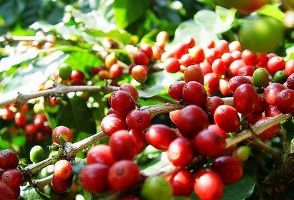
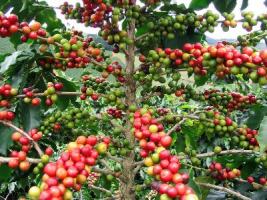
coffee trees
Just as Chile's geography meets all the criteria for producing quality wine, Costa Rica's coffee is world famous for its reasons:
First, natural conditions are superior. This coffee tree was originally intended to grow in the tropical areas within the Tropic of Cancer, above the hillside within 800-1600 meters above sea level, and Colombia is located north of the equator, south of 13 degrees north latitude, its famous coffee triangle, that is, coffee three provinces, is about 1200-1400 meters above sea level, where the Andes stand, moderate rain, plenty of sunshine, and no threat of frost, natural conditions may be better than Brazil. Coffee trees all over the mountains, green a piece, both shrubs tall and short, but also 4, 5 meters high, from afar, seems to be in China's tea forest.
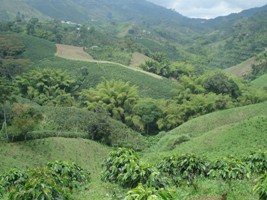
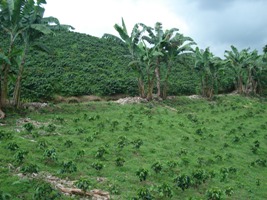
coffee field
Second, the processing method is unique. Coffee trees grow from coffee seedlings. Coffee beans that are bred are picked in the middle of the coffee tree and are full and shiny. Seed beans are grown in special breeding bags and slowly sprout, at first a bit like green sprouts and a bit like matchsticks, and then a new pair of leaves every month, and after six months they are ready to be transplanted into the soil. Coffee beans begin to be produced after 2 years. A coffee tree usually grows for about 8 years, and then it is cut down to grow again. After another 8 years, new coffee seedlings need to be planted. Coffee tree fruit and flowers can exist at the same time, flowers are white, a bit like jasmine, but no fragrance children. The fruit is the size of a cherry, smooth on the surface, red and yellow, with a pair of coffee beans inside. Colombia coffee is washed, the pulp and skin are removed, and after fermentation, it can become a good fertilizer, while coffee beans are soaked in water to remove mucus, then dried, peeled off the skin on the beans, and roasted. The longer the roast time, the higher the temperature, the more mellow the coffee taste, the shorter the roast time, the softer the taste. Moreover, Colombia coffee is all picked manually. It is picked twice a year in May and October. Only ripe coffee fruits can be picked. Unlike Brazil, where machines pick coffee at one time and pick it indiscriminately, there is no washing procedure for processing. The kung fu is not good enough, and the taste is naturally not good enough.
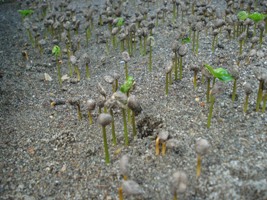
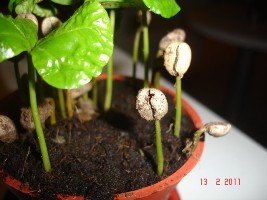
coffee seedling
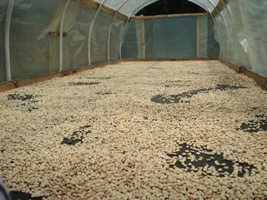
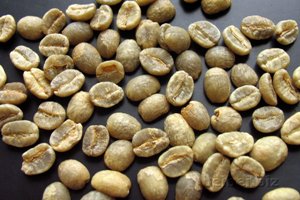
Coffee beans, coffee beans.
Third, the organizational system is perfect. Costa Rica established the National Federation of Coffee Farmers very early. Coffee farmers in all provinces handed in their achievements to the organization after harvest. The Federation set up branches in many countries to promote coffee. It also had certain strategies in operation and marketing. Over time, its reputation became greater and its business became better and better, making Costa Rica coffee go to the world. At present, 25% of Colombia's coffee is exported to Germany, and a considerable part is exported to the United States. Many Starbucks coffee comes from Colombia. Juan Valdez (JUAN VALDEZ, the image of local coffee farmers), owned by the Federation, is the main brand of Colombia, the most famous and naturally the most expensive. It is said that this brand is to select the best coffee beans to do, the rest to other brands to process. That's what they say, but I don't believe it. Because such as SELLO ROJO, OMA and other brands or their own brands in the provinces, there are many local people to buy, taste is not bad. Maybe the first brand is for export, the others are for local use, after all, the latter is cheaper. The coffee we tasted at the local coffee plantation was homemade by the hostess, fresh and authentic, without sugar or partner, and fragrant. She was thinking about getting rid of the association in the future and creating her own brand. After all, her family's coffee area was as much as 75 hectares. She could be considered a landlord.
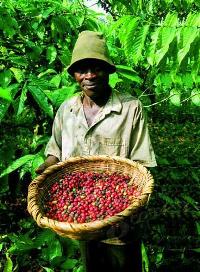
In the past, I never felt how good the coffee was. I knew that the process was so long and arduous. I couldn't help but pay more respect to the coffee served. Respect was for the process itself. (Contributed by Embassy in Colombia)
Important Notice :
前街咖啡 FrontStreet Coffee has moved to new addredd:
FrontStreet Coffee Address: 315,Donghua East Road,GuangZhou
Tel:020 38364473
- Prev

The Dream of a Cafe
Before moving to Beijing, my friend lied to me that the place where I was going to live was a small-capital settlement in Beijing. I came in high spirits. When I looked downstairs, there were people selling steamed buns, live chickens, and small hair salons with abnormal lighting at night, but they didn't sell coffee. I know it's a pipe dream to find a good community cafe in Beijing. Some friends and I came to Beijing at the same time, in the National Library.
- Next

Coffee culture farewell iced coffee
The last thing I want to order for coffee in a cafe is iced coffee. So far, I've had all kinds of iced coffee in all kinds of places, and not once has it been satisfactory. Even a shop that makes hot coffee often falls over iced coffee. Most coffee shops, if willing to spend money on machinery and raw materials, can make passable hot coffee. If the customer orders flowers,
Related
- How did the Salvadoran coffee industry develop in Central America?
- What exactly does the golden cup extraction of coffee mean?
- The Origin of Coffee flower
- [2023 Starbucks World Earth Day] there are more meaningful things besides free Starbucks coffee!
- What kind of coffee is there in Spain? 9 Flavors of Spanish Coffee
- Aromatic African coffee| Kenya's coffee culture and historical production area
- Liberica Coffee Bean knowledge: the characteristics of Liberian Coffee beans of the three original species of Coffee beans
- The origin and formula of Spanish latte introduces the taste characteristics of Bombon coffee in Valencia, Spain.
- How to adjust the solution of over-extracted coffee
- What is the tasting period of coffee beans? What is the period of coffee and beans? How should coffee wake up and raise beans?

